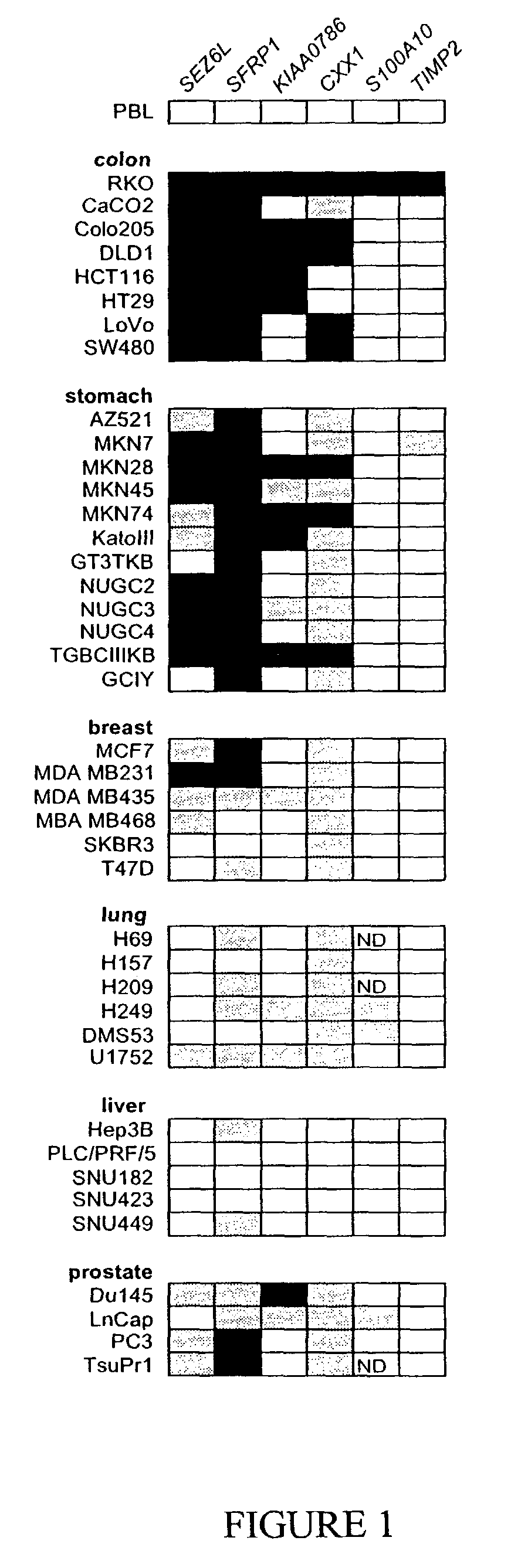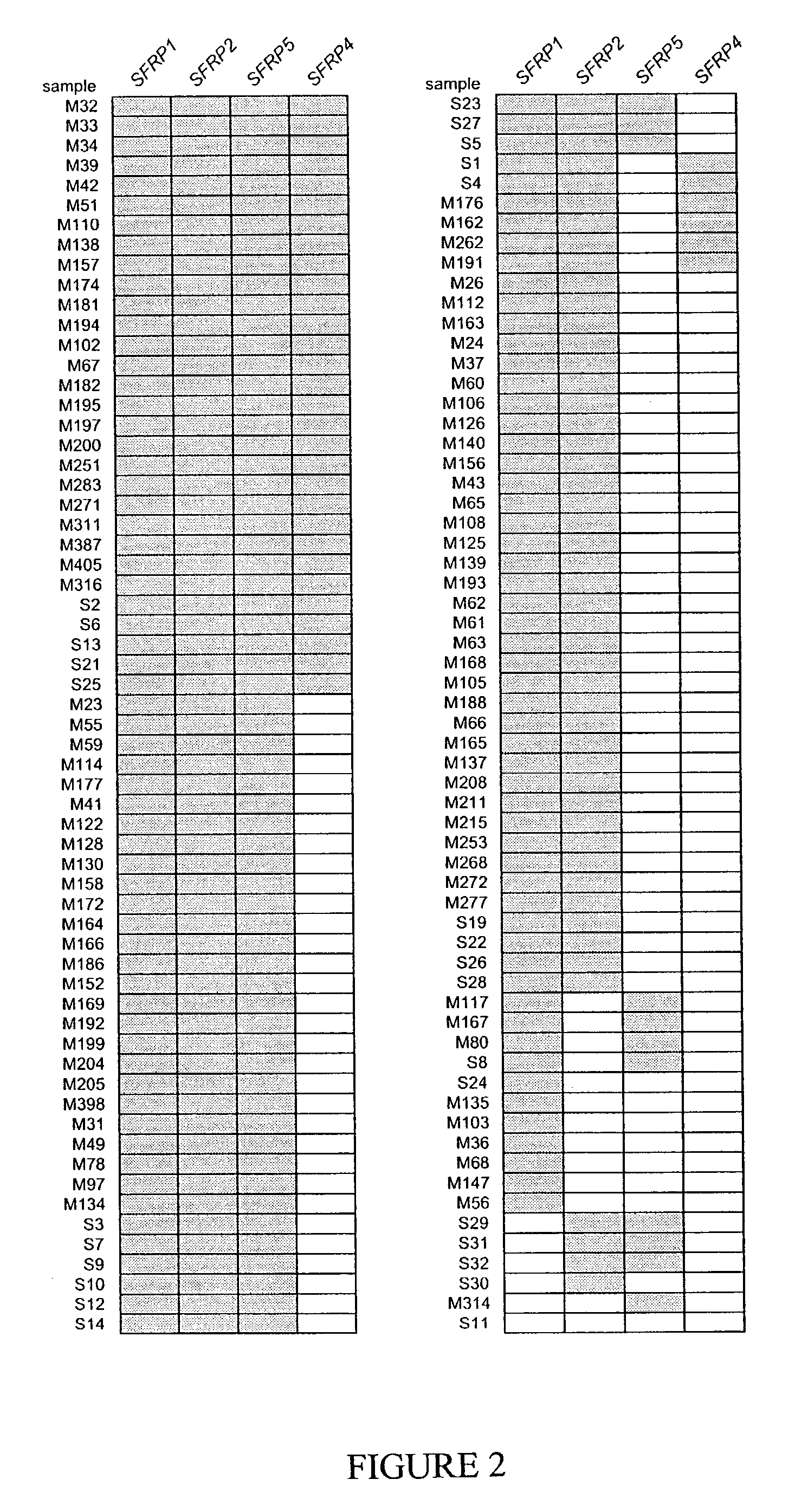Genomic screen for epigenetically silenced genes associated with cancer
a gene and gene technology, applied in the field of gene detection methods, can solve the problems of patients not seeking medical assistance and the inability to find markers for most cancers, and achieve the effect of convenient detection and facilitation of detection
- Summary
- Abstract
- Description
- Claims
- Application Information
AI Technical Summary
Benefits of technology
Problems solved by technology
Method used
Image
Examples
example 1
Genomic Screen for Epigenetic Silenced Gene Associated with Colorectal Cancer
[0122]This example provides a method for detecting genes that are epigenetically down-regulated in cancer cells, and confirms the validity of the method by identifying genes that are epigenetically down-regulated in and diagnostic of colorectal cancer cells (see, also, Suzuki et al., Nature Genet. 31:141-149, 2002, which is incorporated herein by reference).
Methods
Cell Culture and Tissue Samples
[0123]Cell lines were cultured in RPMI 1640 or Minimal Essential Medium (MEM) supplemented with 10% fetal bovine serum. Tissue samples of colorectal cancer and normal colon mucosa were from specimens obtained at the time of clinically indicated surgical procedures.
DAC and TSA Treatment and RNA Preparation
[0124]RKO cells were treated with 5-aza-2′-deoxycytidine (DAC; Sigma) and / or trichostatin A (TSA; Wako) as described (Cameron et al., supra, 1999). Briefly, the treatment consisted of DAC (200 nM) for 48 hr, with dru...
PUM
| Property | Measurement | Unit |
|---|---|---|
| pH | aaaaa | aaaaa |
| volume | aaaaa | aaaaa |
| PSA | aaaaa | aaaaa |
Abstract
Description
Claims
Application Information
 Login to View More
Login to View More - R&D
- Intellectual Property
- Life Sciences
- Materials
- Tech Scout
- Unparalleled Data Quality
- Higher Quality Content
- 60% Fewer Hallucinations
Browse by: Latest US Patents, China's latest patents, Technical Efficacy Thesaurus, Application Domain, Technology Topic, Popular Technical Reports.
© 2025 PatSnap. All rights reserved.Legal|Privacy policy|Modern Slavery Act Transparency Statement|Sitemap|About US| Contact US: help@patsnap.com


